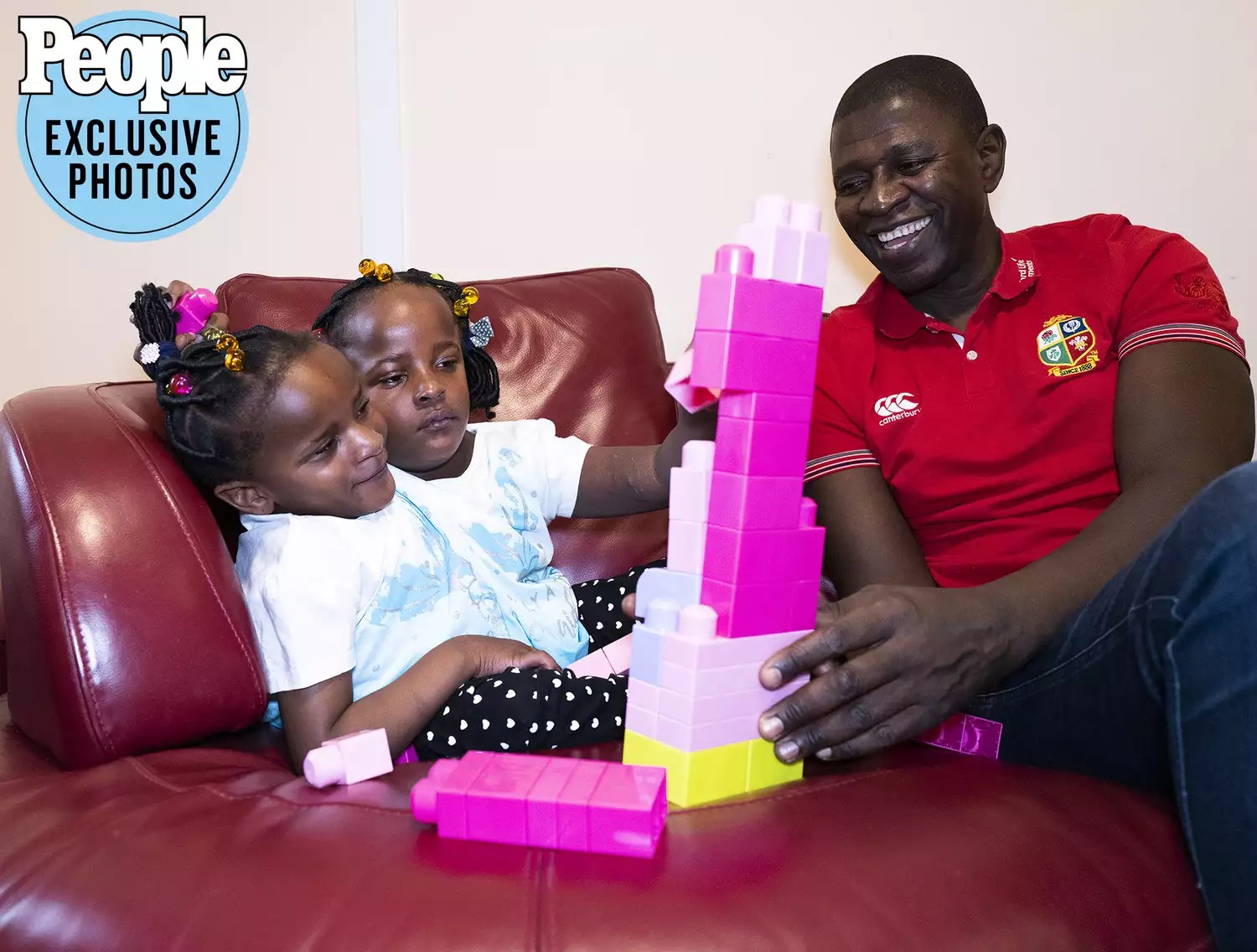Ibrahima Ndiaye at home in Cardiff, Wales, playing with his daughters Marieme (left) and Ndeye.Photo: Lauren Joy Fleishman

Conjoined twinsMarieme and Ndeye Ndiayeseem to be as similar as any two people can be, physically and genetically, but to their dad, Ibrahima Ndiaye, says the 6-year-oldscouldn’t be more different.
“They look the same on the outside but they’re completely different in here.” Ndiaye tells PEOPLE in this week’s issue, tapping his head.
At school in Cardiff, Wales, where they live with their dad, “they have separate friends because they have very different personalities,” says their head teacher Helen Borley of the Mount Stuart Primary School. “Ndeye is outgoing and extroverted. She’s out there and loud! And Marieme is contained and contemplative.”
Although they share a body, including a liver, bladder and digestive system, and have three kidneys between them, the contrast between them was evident from birth: “They’ve been like that from day one,” says their dad, who takes care of the girls on his own. (AGoFundMehas been set up to help the family with expenses.)
In fact, ‘identical’ twins, which result from a single fertilized egg and occur in about 1 of every 150 births (other mammals, like dogs have had identical twins, but it’s thought to be very rare), are not really identical at all. They have unique fingerprints, teeth, brain folds and, like Marieme and Ndeye, different personalities.
And scientists think their differences could be the very reason they exist.
RELATED CONTENT: Twins Who Married Twins and Gave Birth to Genetic Siblings Say Their ‘Quaternary Marriage’ is ‘Magical’
Sometimes these quirks in behavior and medical conditions are obvious immediately. At other times the contrasts become evident later. Occasionally, one twin will have autism, bi-polar disorder while the other doesn’t, or twins can have different sexual orientations. In the case of American identical twinsNicole and Jonas Maines, Nicole is transgender, while her twin brother Jonas is not.
Research on conjoined twins — a phenomenon that occurs when an egg fails to fully split — shows that from the beginning, one conjoined twin will usually be outgoing and the other withdrawn, often mirroring the characters of mom and dad. And as in the case of Marieme and Ndeye, one twin might even get sick while the other stays healthy — when Marieme fell ill with COVID recently, her sister never tested positive.
Lauren Joy Fleishman

Differences in character in identical twins have traditionally been attributed to different environments, both in-utero and in life. Butconjoined twinsshare a body, a placenta and often an umbilical cord. The fact that they have completely different identities might offer a clue as to why humans are thought to be the only mammal to commonly have identical twins (apart from the nine-banded armadillo which produces quadruplets due to the shape of its womb), and how it happens.
“A marked difference between the small cluster of cells almost immediately after the fertilized egg begins dividing and multiplying may provide a fundamental explanation for the phenomenon of identical twinning,” Judith Hall, professor emerita at the University of British Columbia explains to PEOPLE. She has been studying twins for 50 years and is considered a world authority in genetics and pediatrics.
It might be these early cells carry “conflicting” inherited traits from their parents that the body considers to be incompatible in one organism. In other words, genes passed down from the mother and father might repel each other, causing the division.
“I can well imagine that the two pronuclei from sperm and egg that are forming the fertilized egg, both with very different epigenetic markers” (that alter gene expression) “could lead to the split,” she says. “And then they maintain their epigenetic differences. In that way, one seems like dad and one like mom.”
Craig carried out a survey that revealed that almost a third of parents of identical twins believed they were fraternal, partly due to their different personalities.
Meanwhile, Ibrahima Ndiaye is exploring the possibility of sequencing the genomes of his own girls in hopes that they could provide important clues to the origin of human development. “These two are unique and they should be valued,” he says of his daughters. “They are special.”
Juliet Butler is the author of a novel based on the true life story of Russian conjoined twins Masha and Dasha Krivoshlyapova,The Less You Know The Sounder you Sleep.
source: people.com